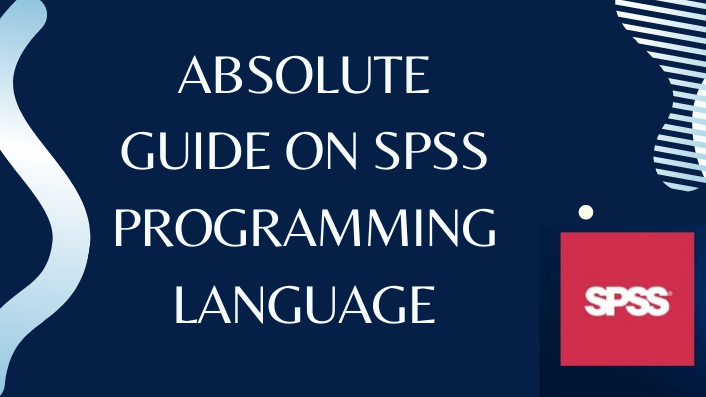SPSS is a predictive analytic method used in social science for tasks such as competitor analysis, market research, surveys, and more. SPSS is a versatile and detailed statistical data management tool, and it is the most widely used statistics package for performing complex data analysis and manipulation. This is planned for non-interactive as well as interactive users. Let’s look at the advantages and characteristics of SPSS before we get into the specifics of how to use it and also get SPSS assignment help.
This program was created in 1960, but IBM purchased it in 2009. They’ve made some major improvements to SPSS’s code. And can handle a wide range of research tasks in a variety of fields. As a result, this program is now used in various sectors and organizations. Including marketing, health care, education, surveys, and more.
SPSS language
SPSS syntax is a programming language that helps you to perform analysis and data manipulation. In a way that would be repetitive, complicated, or impossible using drop-down menus.
The syntax of SPSS is a programming language that is only used in SPSS. Rather than using the graphical user interface, you can write commands that run SPSS procedures.
Syntax enables users to complete tasks that would otherwise be too time-consuming or difficult to complete using drop-down menus. If you’re re-running the same analysis several times or doing complex data transformations, this is the case. Syntax also keeps track of how you transformed and analyzed your data, allowing you to recreate those steps at any time and also get SAS assignment help.
Benefits of SPSS
● Better data management :
Since this tool’s software knows the exact positions of the variables and events, it allows data analysis faster and easier. This also helps programmers and consumers save time by reducing their manual workload.
● Wide range of options
It assists users with various types of charts, methods, and graphs. Spss also provides better cleaning and screening features for the information which is used for further analyses.
● Wide range of storage
The SPSS tool’s output is kept separate from the rest of the results. Or, to put it another way, it separates the data output into different folders and files.
Uses of SPSS
● Data organization and collection
The majority of the researchers use SPSS to collect data. The data entry screen in SPSS appears to be identical to that of other spreadsheet applications. Data and variables can be entered quantitatively, and the files can be saved as data files. Aside from that, SPSS allows users to control their data by assigning properties to various variables.
Let’s look at an example: a single variable can easily be classified as a nominal variable, and that information can be stored in SPSS. Now, you will be able to view the same data file in the future, which may be weeks, months, or even years, and you will be able to see that the data has been monitored in the same manner as before.
● Data output
When you collect and enter data into a datasheet in SPSS, you can quickly generate output files from the information. Data output can be considered one of the best uses of SPSS because of this feature. Take, for example, the ability to produce frequency distributions of large data to determine if the data set is distributed normally or not.
● Statistical tests
This is yet another example of how SPSS can be used to analyze statistical data. It has all of the required statistical testing components built into its program. As a result, there is no need to measure mathematical equations by hand. The desired outputs will be shown in the appropriate data output files when a statistical test is run. Using advanced statistical exportation methods, one can export their results. This approach is most commonly used for non-normally distributed data.
Importance of SPSS in research and development
● Data transformation
This technique is used to change the data’s format. It integrates the same type of data in one location after changing the data type, making it easier to handle. You can put any data into SPSS, and it will adjust its structure according to the system’s specifications. This means that even though you switch operating systems, SPSS will still operate with old results.
● Analysis with regression
It’s used to determine how dependent and interdependent variables in a data file relate to one another. It also describes how the dependent data may be affected by a shift in an interdependent variable’s value. The primary goal of regression analysis is to figure out what kind of relationship exists between various variables.
● Analysis of variance
It’s a statistical method for comparing events, entities, or processes and determining their differences. It will assist you in determining which approach is best for completing a mission. The efficacy and effectiveness of a process can be determined by looking at the results.
● Multivariate analysis of variance
This approach compares data from random variables with unknown values. The MANOVA method can also investigate various types of populations and the factors that influence their decisions.
● T-tests
It’s used to figure out how to tell the difference between two sample types, and researchers use it to figure out how to tell the difference between two groups’ interests. This test may also determine whether the output is useless or useful.




